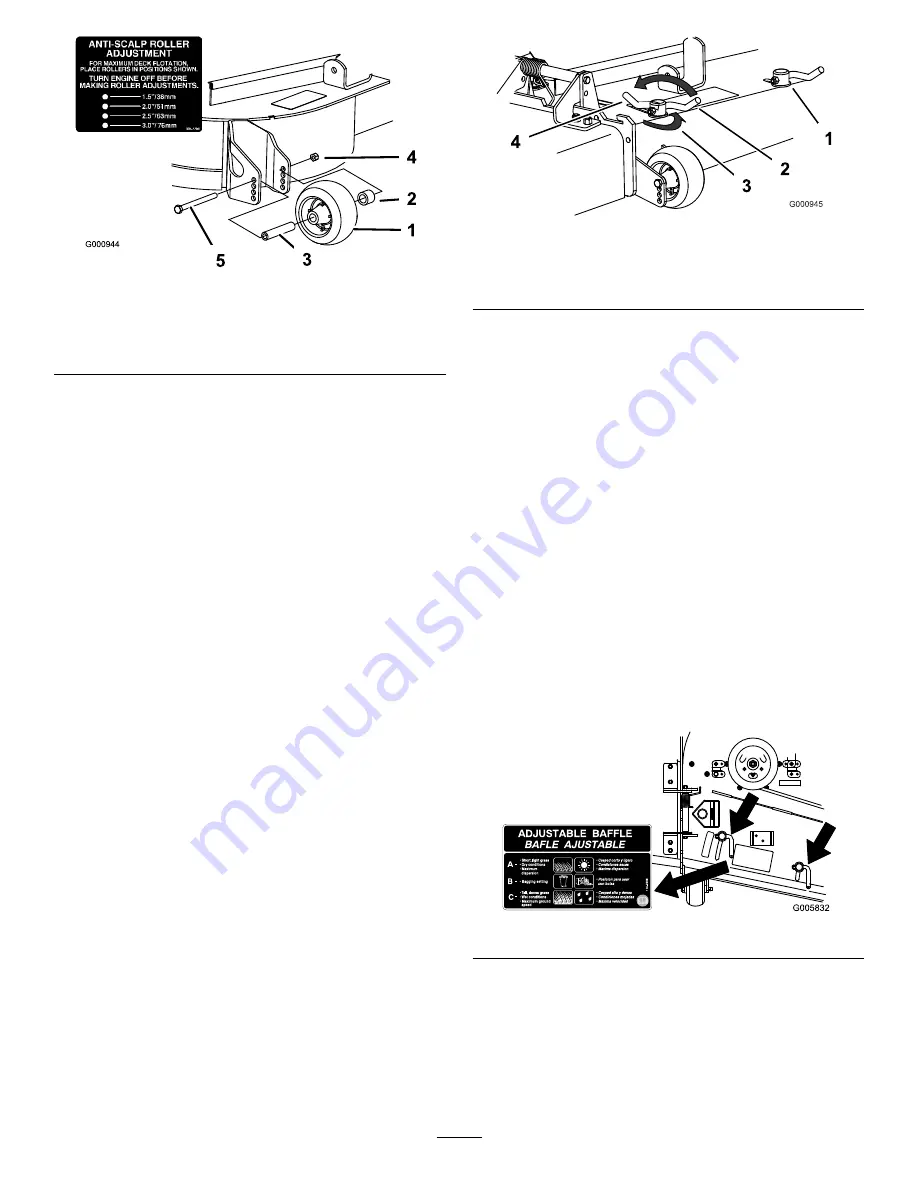
Figure 19
1.
Anti-scalp roller
4.
Flange Nut
2.
Spacer
5.
Bolt
3.
Bushing
Adjusting the Flow Baffle
The mower discharge flow can be adjusted for different
types of mowing conditions. Position the cam locks
and baffle to give the best quality of cut.
1. Disengage the PTO, move the motion control
levers to the neutral locked position and set the
parking brake.
2. Stop the engine, remove the key, and wait for all
moving parts to stop before leaving the operating
position.
3. To adjust the cam locks, swing the lever up to
loosen the cam lock (Figure 20).
4. Adjust the baffle and cam locks in the slots to the
desired discharge flow.
5. Swing the lever back over to tighten the baffle and
cam locks (Figure 20).
6. If the cams do not lock the baffle into place or it is
too tight, loosen the lever and then rotate the cam
lock. Adjust the cam lock until the desired locking
pressure is achieved.
Figure 20
1.
Cam lock
3.
Rotate cam to increase or
decrease locking pressure
2.
Lever
4.
Slot
Positioning the Flow Baffle
The following figures are only recommendations for
use. Adjustments will vary by grass type, moisture
content, and height of grass.
Note:
If the engine power draws down and the mower
ground speed is the same, open up the baffle.
Position A
This is the full rear position. The suggested use for this
position is a follows.
•
Use for short, light grass mowing conditions.
•
Use in dry conditions.
•
For smaller grass clippings.
•
Propels grass clippings farther away from the
mower.
Figure 21
Position B
Use this position when bagging.
22
















































